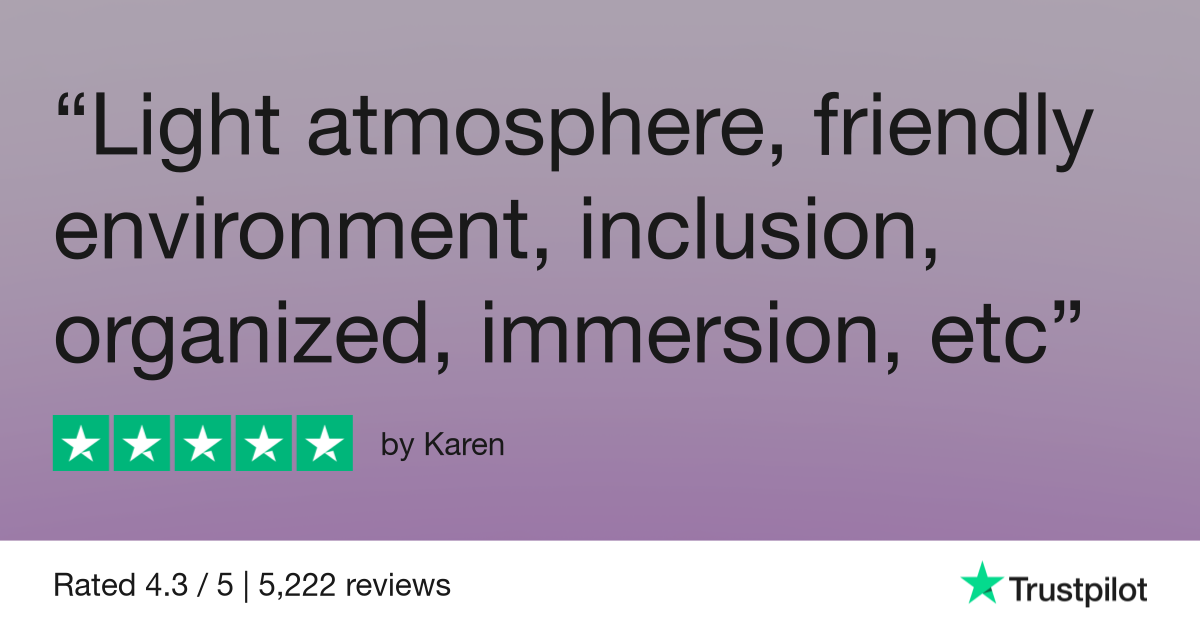German two-way prepositions (‘Wechselpräpositionen’): Accusative vs. dative rules

If you’ve ever stared at a German sentence wondering why a preposition sometimes takes the accusative and sometimes takes the dative, you've encountered one of the more puzzling features of German grammar: Wechselpräpositionen (two-way prepositions).
These prepositions are called "two-way" because they can trigger either the accusative or dative case, depending on the context. Confused yet? Don’t worry, and don’t settle for survival German — we’ll break it down. In this guide, we’ll show you how these words behave and which case to use in a given situation.
- German two-way prepositions
- Core rule: Movement vs. location
- Declensions and contractions
- Examples of each preposition in action
- FAQs
German two-way prepositions
Here are the nine most common German two-way prepositions, with their English equivalents:
- an (at/on, e.g., a vertical surface)
- auf (on, e.g., a horizontal surface)
- hinter (behind)
- in (in/into)
- neben (next to)
- über (over/above)
- unter (under/beneath)
- vor (in front of)
- zwischen (between)

Learn German with Lingoda
How it works

Core rule: Movement vs. location
The secret to mastering German two-way prepositions lies in one simple question: Is something moving, or staying put? This is similar to the distinction between the question words wo and wohin, with the former indicating the location of something and the latter indicating a change in position.
Movement → Accusative (‘Wohin?’)
If the sentence involves motion or a change of position, you’re answering the question “Wohin?” (“Where to?”). This means that you must use the accusative case.
- Ich gehe in das Haus. (I’m going into the house.)
- Er legt das Buch auf den Tisch. (He puts the book onto the table.)
Location → Dative (‘Wo?’)
If there’s no movement and you're describing a fixed location, you’re answering “Wo?” (“Where?”). This means that you must use the dative case.
- Ich bin in dem Haus. (I’m in the house.)
- Das Buch liegt auf dem Tisch. (The book is lying on the table.)
Declensions and contractions
Two-way prepositions change the form of the following article. Here’s how articles shift between accusative and dative, plus some common contractions you’ll hear all the time.
| Gender | Accusative | Dative |
| Masculine (der) | den | dem |
| Feminine (die) | die | der |
| Neuter (das) | das | dem |
| Plural (die) | die | den (+ -n on the noun) |
- Ich stelle das Glas auf den Tisch. (accusative – motion)
- Das Glas steht auf dem Tisch. (dative – location)
In spoken and written German, these prepositions often contract with articles to make speech smoother:
| Contraction | Full form | Meaning |
| ins | in + das | into the (neuter) |
| im | in + dem | in the (neuter/masc.) |
| ans | an + das | onto + the |
| am | an + dem | at/on + the |
| aufs | auf + das | onto + the |
| aufm | auf + dem (colloquial) | on the |
| vom | von + dem | from the |
| zum | zu + dem | to the |
| zur | zu + der | to the (fem.) |
These little shortcuts are everywhere — especially in everyday speech. Mastering them makes your German flow more naturally and shows you’re tuned in to how the language works, even more so than having a good German accent.
Examples of each preposition in action
An vs. auf (vertical vs. horizontal surfaces)
These two both mean “on,” but they’re used in different spatial contexts.
Use an when something is attached to or very close to a vertical surface, such as a wall, a door or the edge of a river.
- Das Bild hängt an der Wand. (The picture is hanging on the wall.) → dative
- Ich hänge das Bild an die Wand. (I’m hanging the picture onto the wall.) → accusative
Use auf when something is placed on top of a horizontal surface, such as a table, bed or shelf.
- Das Buch liegt auf dem Tisch. (The book is lying on the table.) → dative
- Ich lege das Buch auf den Tisch. (I’m laying the book onto the table.) → accusative
Hinter (behind)
- Der Hund schläft hinter dem Sofa. (The dog is sleeping behind the sofa.) → dative
- Der Hund läuft hinter das Sofa. (The dog runs behind the sofa.) → accusative
In (in/into)
- Wir sind in der Schule. (We are in the school.) → dative
- Wir gehen in die Schule. (We are going into the school.) → accusative
Neben (next to)
- Die Lampe steht neben dem Bett. (The lamp is next to the bed) → dative
- Ich stelle die Lampe neben das Bett. (I put the lamp next to the bed.) → accusative
Über (above/over)
- Die Lampe hängt über dem Tisch. (The lamp is hanging above the table.) → dative
- Ich hänge die Lampe über den Tisch. (I’m hanging the lamp above the table.) → accusative
Unter (under/below)
- Die Katze liegt unter dem Stuhl. (The cat is laying under the chair.) → dative
- Die Katze läuft unter den Stuhl. (The cat is running under the chair.) → accusative
Vor (in front of)
- Das Auto steht vor dem Haus. (The car is parked in front of the house.) → dative
- Ich fahre das Auto vor das Haus. (I’m driving the car in front of the house.) → accusative
Zwischen (between)
- Der Stuhl steht zwischen den Tischen. (The chair is between the tables.) → dative
- Ich stelle den Stuhl zwischen die Tische. (I’m placing the chair between the tables.) → accusative
Can movement verbs ever take dative?
Yes — if there’s no change in location. For example: Ich laufe im Park. (I’m running in the park.)
How can I remember the case rules more easily?
Ask “Wohin?” for accusative (movement) and “Wo?” for dative (location). Works like a charm.
Final thoughts on German two-way prepositions
Tackling two-way prepositions when learning German may seem tricky at first, but the core idea is simple: movement = accusative, location = dative. Get that down, and everything else starts to fall into place, especially with common contractions and clear examples in mind.
The best way to master two-way prepositions? Use them in real conversations. With Lingoda’s native-level teachers and focus on real-life language, you’ll get the repetition, feedback and confidence you need to make these grammar moves feel automatic.
Practice often, and soon enough, you’ll be choosing the right case — ohne nachzudenken.

Learn German with Lingoda
How it works

















